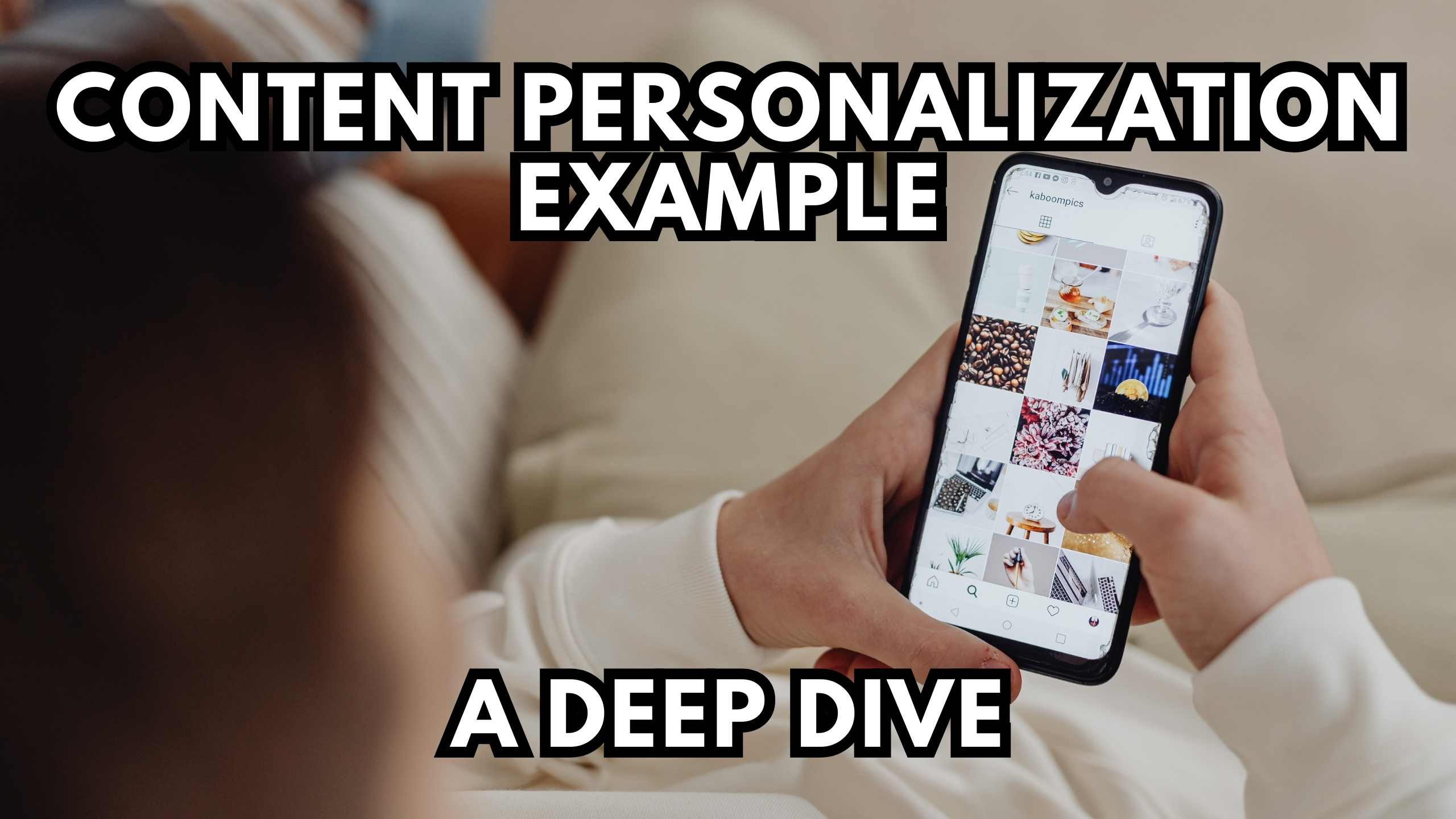Content Personalization Example: A Deep Dive


Content Personalization Example: A Deep Dive
In the digital age, where user engagement is paramount, content personalization has become a strategic imperative for businesses. This blog takes a comprehensive look at content personalization, providing insights into its significance, strategies, and real-world examples that showcase its effectiveness.
Understanding Content Personalization
Content personalization involves tailoring online content to meet the specific needs and preferences of individual users. It goes beyond generic messaging, offering a more personalized and engaging user experience. Businesses achieve this by leveraging data insights to deliver relevant content, ultimately enhancing user satisfaction and conversions.
The Significance of Personalization in User Engagement
In today’s crowded digital landscape, users are inundated with information. Content personalization emerges as a powerful tool to cut through the noise, capturing users’ attention with content that resonates with their interests. This not only fosters a stronger connection between businesses and users but also contributes to increased brand loyalty and long-term customer relationships.
Strategies for Effective Content Personalization
Implementing content personalization requires a thoughtful strategy. Businesses can employ techniques such as user segmentation, behavioral targeting, and AI-driven recommendations to deliver personalized content. The key is to strike a balance between customization and privacy, ensuring that users feel their data is used responsibly to enhance their online experience.
Real-world Example: Netflix’s Personalized Recommendations
A prime example of content personalization is Netflix’s recommendation algorithm. By analyzing user viewing history, preferences, and behavior, Netflix suggests content tailored to each user’s taste. This not only keeps users engaged but also plays a pivotal role in the platform’s immense success.
Leveraging SaaS for Seamless Content Personalization
Effective content personalization often involves the integration of SaaS tools. Here are five relevant SaaS products that enhance content personalization:
- Optimizely: Optimize user experiences with A/B testing and experimentation, ensuring your personalized content resonates effectively.
- Segment: Streamline user data collection and segmentation for more targeted content personalization strategies.
- Dynamic Yield: Leverage AI-driven personalization to tailor content based on real-time user interactions, enhancing engagement.
- Marketing Cloud: Implement 1:1 personalization across multiple channels, providing a cohesive and personalized user journey.
- Monetate: Drive personalized content across web and mobile platforms, increasing user satisfaction and conversions.
Conclusion
In conclusion, content personalization is not just a trend but a fundamental strategy for businesses aiming to stand out in the digital landscape. By understanding its significance, implementing effective strategies, and learning from real-world examples like Netflix, businesses can forge meaningful connections with users.
Elevate Your Content Strategy with Subscribed.fyi!
Ready to take your content personalization to the next level? Subscribed.fyi offers exclusive deals on essential SaaS tools. Sign up for free to unlock secret deals and transform your content strategy. Empower your business with the right tools and deliver personalized experiences that resonate with your audience.
Relevant Links:





